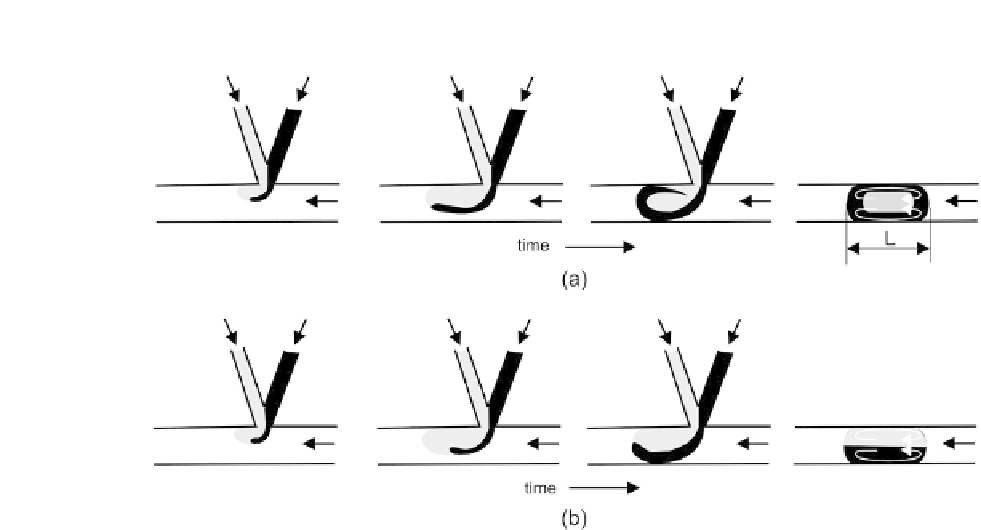Biomedical Engineering Reference
In-Depth Information
FIGURE 6.38
Droplet-based micromixer in a straight channel: (a) good initial distribution and (b) bad initial distribution.
distributed across both halves of the plugs and easily dispersed by the two internal vortices
(
Fig. 6.38
(a)). During the passage in the straight microchannel, the number of rotations is proportional
to the ratio between the traveling distance
x
and the plug length
L
. Thus, scaling of the mixing time can
be estimated as
t
mixing
f
L
=
x
:
(6.41)
If the velocity of the single vortex during formation is not high enough, the mixing liquid cannot
complete a 90
rotation. The mixing liquids are then separated in the two halves of the broken-up plug.
The liquids will stay in their halves because of the symmetric vortices. The mixing condition is then
similar to that of a simple T-mixer with parallel lamination (
Fig. 6.38
(b)).
As a rule of thumb, the initial distribution depicted in
Fig. 6.38
(a) can be achieved with a high shear
rate and a small plug. Thus, the higher the carrier flow rate and the smaller flow rate ratio
r
(see
(6.14)
),
the better the mixing in liquid plugs, which are formed and transported in a straight channel. Since the
internal velocity of the plug and the formation process itself are a complex interplay between flow
rates, viscosity, interfacial tension, and channel geometry, it is difficult to achieve the right initial
distribution in the plug. In the subsequent section, different schemes for achieving chaotic advection
inside the plug, when it is transported in a microchannel, are discussed. With chaotic advection, mixing
quality no longer depends on the initial distribution of the liquids.
6.4.2.2 Mixing based on chaotic advection inside a microdroplet
As mentioned previously, mixing in a microplug or a microdroplet moving in a straight channel relies
much on the initial distribution of the mixing liquids.
Figure 6.39
shows the mixing concept based on



Search WWH ::

Custom Search